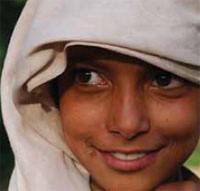India

India is a disaster-prone country and highly vulnerable to most types of natural calamities due to its geographical position, population density, population shifts and depletion of natural environment.
The country also faces a number of other serious threats:
-
epidemics, (including water-borne diseases subsequent to disasters such as floods)
-
access to health care
-
gender-based discrimination and civil disturbances
The Indian Red Cross (IRCS) is one of the largest and oldest indigenous humanitarian organizations in the country. It is known for its work in disaster response (earthquake, cyclones, drought, floods and internal conflicts) as well as health care, blood services and welfare programs. The Canadian Red Cross (CRC) has long history of supporting IRCS with intermittent support since 1977.
Disaster Response
The Gujarat earthquake disaster response in 2001 was one of the largest relief operations in the history of the International Federation of Red Cross and Red Crescent Societies. The Canadian Red Cross moved quickly to provide immediate relief to earthquake victims. The CRC contributed close to $1.6 million to the initial appeal for relief aid, with the Canadian government contributing an additional $750,000. Over 300,000 people received assistance.
The response of the Canadian public and Canadian government to the December 2004 South Asia Tsunami was astounding, with the Canadian Red Cross contributing a 11.4 million dollars over a period of 10 years.
Improving Community Resilience
The Indian Ocean Tsunami of 2004 significantly increased the involvement of Canadian Red Cross in supporting the Indian Red Cross initiative especially the post tsunami development programs in two major Tsunami affected Indian States - Tamil Nadu and Andhra Pradesh.
Programs covered a total of 29,500 households (approx. 147,500 community members),
-
focussing on disaster risk reduction, improved health and livelihoods, & violence prevention
The Tamil Nadu program has reached approx. 30,000 students from 79 schools with an integrated and age-specific curriculum of Health, DRR and Violence Prevention.
Integrated Program for Community Development - Tamil Nadu
Health: Volunteers were trained as health promoters to promote behaviour change to improve maternal and child health care and nutrition and decrease HIV/AIDS, water- and vector-borne diseases and injury prevention. Volunteers also provide First Aid, give practical advice, and usually work hand-in-hand with staff of the government primary health centres.
Livelihoods: Livelihood groups are small gender and profession based groups that focus on a savings and loans from income generation initiatives, for which Canadian Red Cross donated small grants as start-up capital.
-
Approximately 1100 vulnerable members have benefitted from program villages.
Violence Prevention: Violence Prevention and the rights of the girl child program was introduced in 2010 and around 60,000 community members have been reached. Learn more about Violence Prevention for children and youth.
-
Since 2011 around 30,000 students per year are being reached with a focus on youth leadership within schools and the establishment of peer education.
School Project: Peer educators, are trained to pass on key messages around Red Cross, hygiene promotion, health, sanitation, disaster risk reduction and violence prevention to other students and parents.
Junior child protection teams promote non-violent behaviour and intervene in specific cases of violence or bullying.
Disaster Risk Reduction

Early warning by IRCS volunteers before cyclone HudHud in Andhra Pradesh
-
Community micro groups are neighbourhood groups of households who support each other in disaster preparedness and recovery
-
Village disaster management teams lead village-level preparedness, mitigation and recovery efforts
-
Community disaster management committee guide and oversee implementation
Interventions also include – early warning systems, search & rescue material and construction of various structures towards disaster mitigation.
Learn more "Cyclone Hudhud ‐ After Action Review".
Community map or vulnerability and hazard map is an important component of the Community based disaster risk reduction activities.
Capacity Building of the Indian Red Cross

First Aid Master Training for IRCS staff

